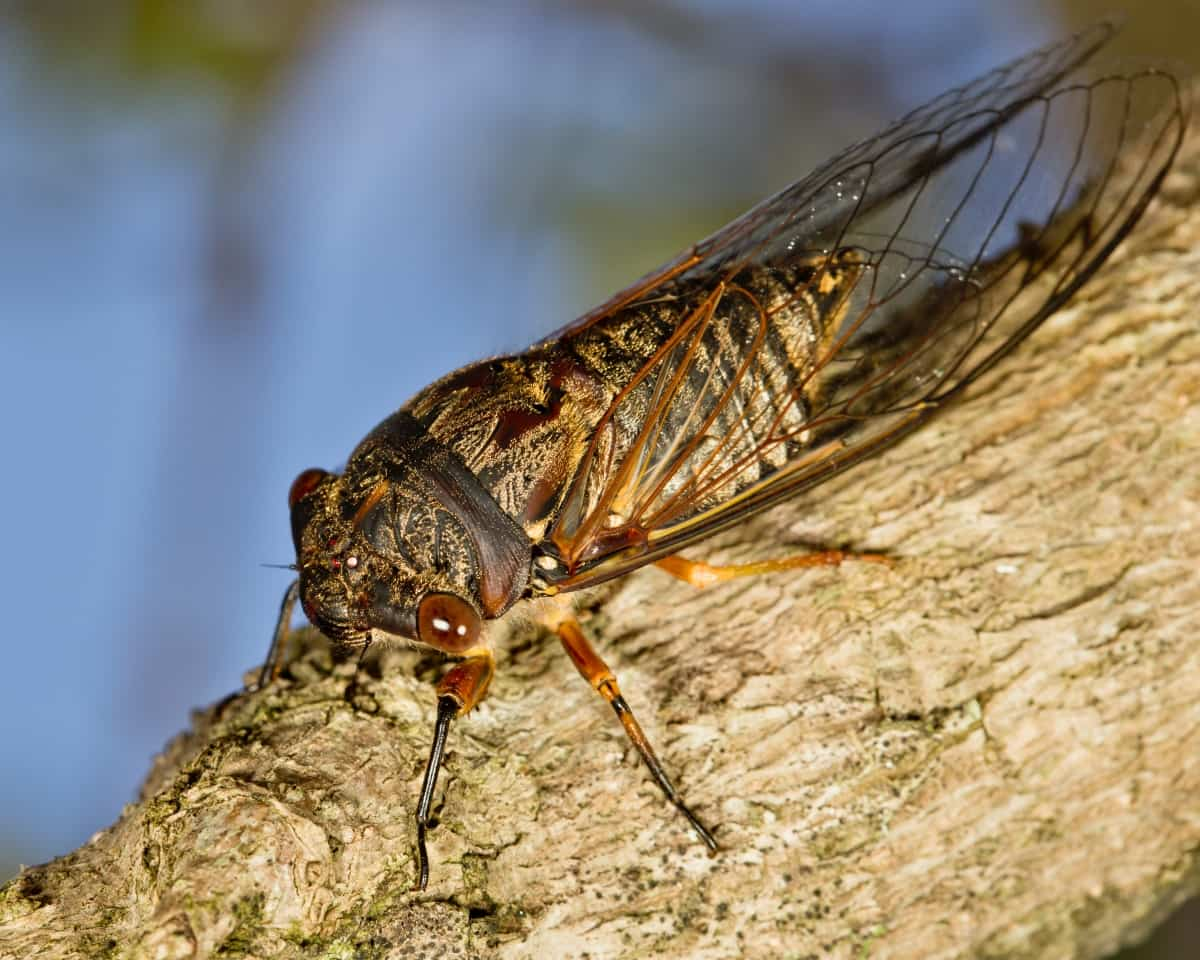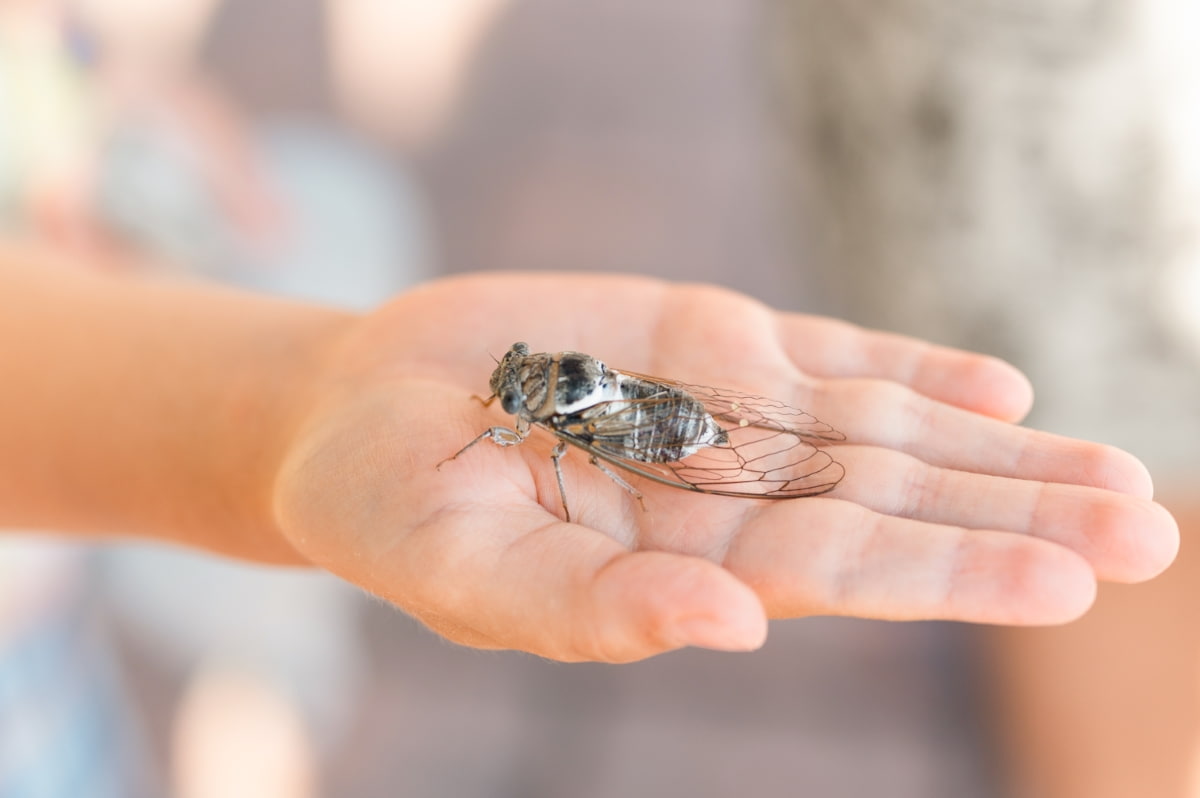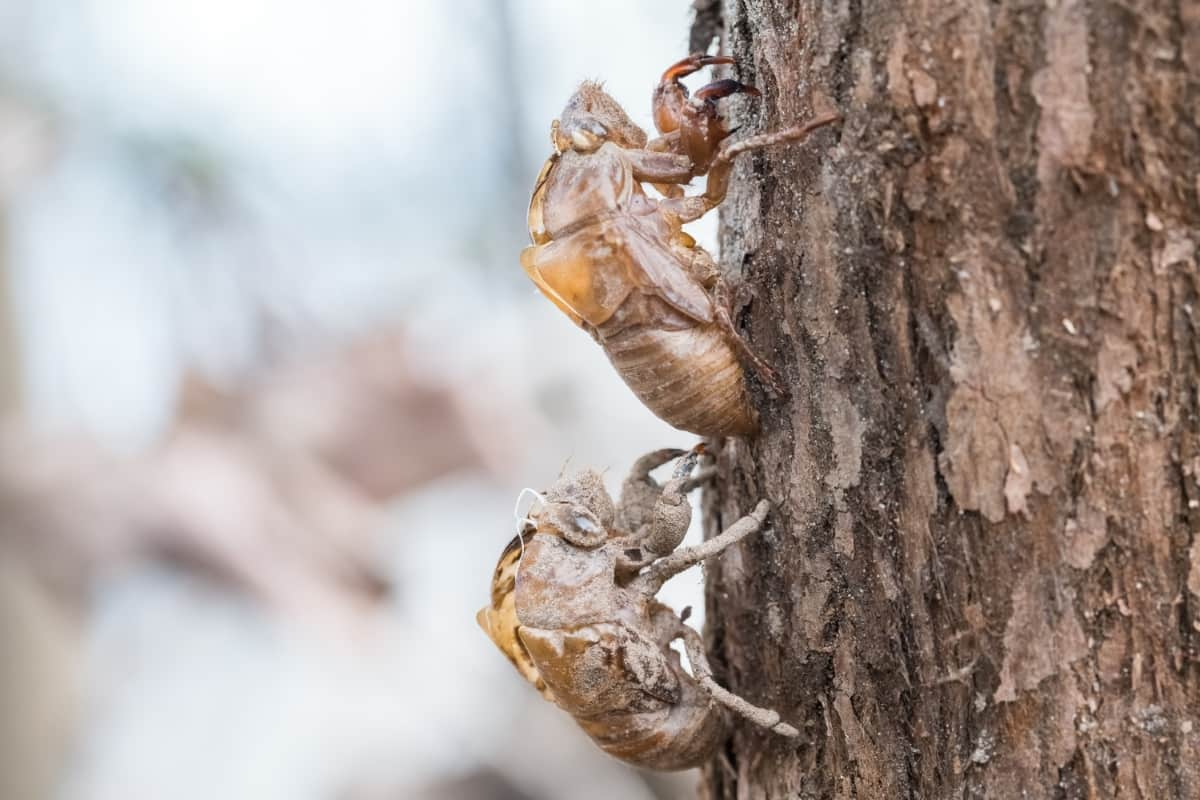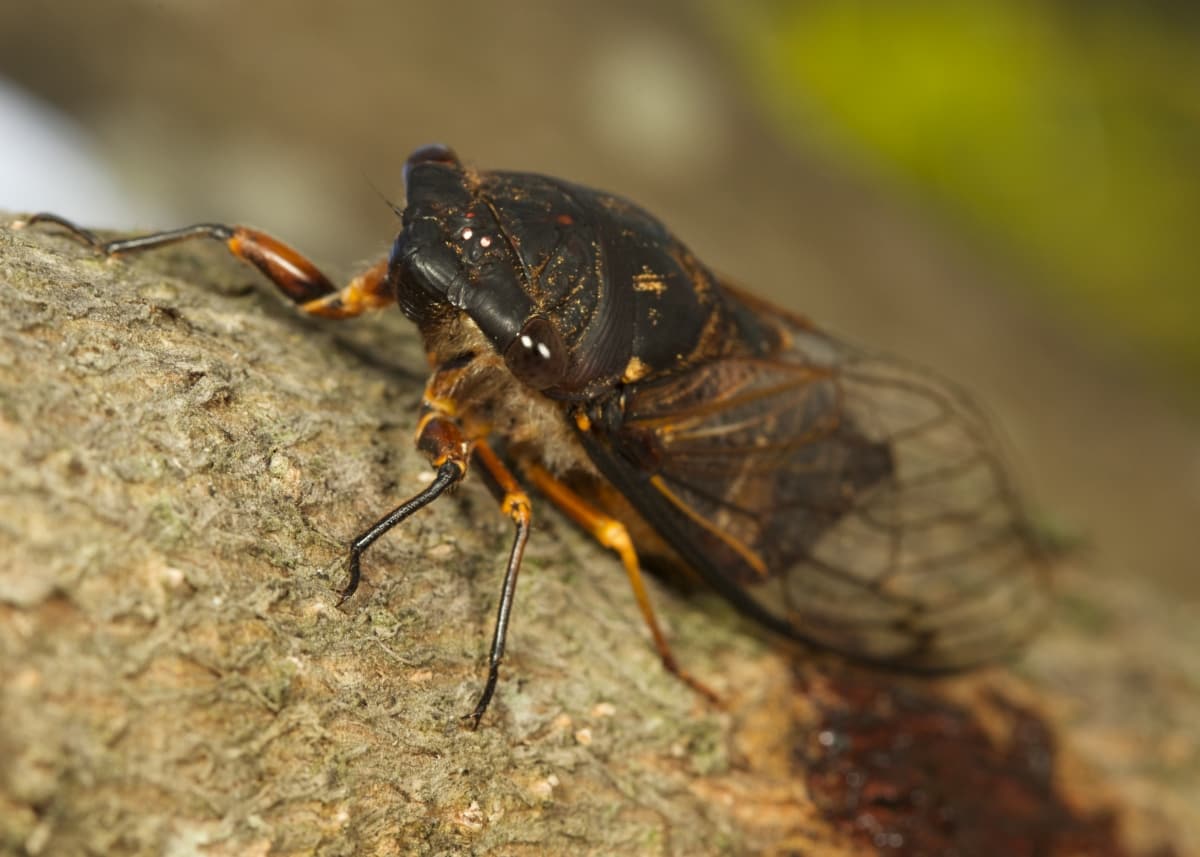Cicada’s scientific name is Cicadoidea, and there are over 3,000 known species worldwide. Dealing with Cicada infestations can be a challenging task, but it is not impossible. By understanding the types of Cicadas and their life spans, as well as why they are considered pests, you can better tackle the problem head-on.

Prevention is key when avoiding future Cicada infestations. By implementing preventative measures and staying proactive about protecting your yard and garden, you can significantly reduce the risk of a major Cicada infestation on your property without relying solely on chemical insecticides.
How to Get Rid of Cicadas
Effective Strategies for Managing Cicada Populations in Your Garden
Timing is key when managing them in your garden. By identifying when they will emerge from the ground, you can take preventive measures such as covering vulnerable plants with netting or introducing natural predators like birds or predatory insects. Creating physical barriers is another strategy that has proven successful in controlling Cicadas. Installing fine mesh netting around susceptible trees can prevent adult Cicadas from laying eggs on branches and causing damage.
Additionally, placing sticky traps near affected areas can help capture and reduce their numbers. Maintaining a healthy garden environment is also essential in managing Cicada populations. Regularly pruning trees and removing deadwood eliminates potential breeding grounds for these pests. Furthermore, practicing good soil management by ensuring proper drainage and fertility helps keep plants strong and less susceptible to attack.
If chemical control methods are necessary, consider using insecticides specifically formulated for targeting chewing insects like caterpillars or beetles that may be feeding on foliage damaged by Cicadas. However, always follow label instructions carefully to minimize harm to beneficial insects.
Understanding and Controlling Cicadas
Controlling Cicada populations can be challenging but not impossible. One method is physical removal by handpicking them off plants or using nets to capture them in mid-air. Another approach involves creating barriers around prized plants using fine mesh netting or floating row covers. Additionally, certain insecticides specifically formulated for Cicadas can provide effective control when applied according to instructions. However, it’s important to consider the potential impact on other beneficial insects and wildlife when using chemical methods.
Cicadas Size and Life Span
When it comes to size, Cicadas range in length from about 1 to 2 inches, depending on the species. Some may be smaller or larger, but this is the general range you can expect. Their bodies are robust and typically adorned with vibrant colors, making them quite eye-catching. Cicadas have a unique life cycle that spans several years underground before they emerge as adults. The exact duration varies between different species but ranges anywhere from 2 to 17 years.
What Attracts Cicadas and What Kills Cicadas Instantly
Understanding what attracts them and how to control Cicada’s population is crucial in keeping them at bay. These winged creatures are drawn to areas with plenty of trees as they rely on these plants for both food and shelter. They are particularly attracted to deciduous trees, such as Oak, Maple, and Birch. Some methods have proven effective in reducing their numbers. One option is using insecticides specifically designed for Cicada control. You can apply these products to the affected areas or inject them into the soil around tree roots.
In case you missed it: How to Get Rid of Slugs and Snails in Lawn Naturally: Control and Treatment

Another method is physical removal. You can manually pick off adult Cicadas from plants and dispose of them properly. This requires time and effort but can significantly reduce their presence in your garden. Additionally, attracting natural predators like birds or bats can help keep Cicada populations under control. Installing bird feeders or bat houses near infested areas may encourage these animals to visit your yard more frequently.
Environmentally Friendly Methods to Keep Cicadas at Bay
- Use physical barriers: Install fine mesh netting around vulnerable plants to prevent Cicadas from laying their eggs.
- Plant-repellent herbs: Certain herbs like Mint, Basil, and Lavender have natural repellent properties that deter Cicadas.
- Introduce predators: Encourage birds, such as robins and blue jays, to visit your garden by providing bird feeders or nesting boxes.
- Spray insecticidal soap: A solution of water and biodegradable insecticidal soap can be applied directly on affected trees and plants to repel Cicadas without harming other insects.
- Use reflective surfaces: Hanging aluminum foil strips near plants can create reflections that confuse and discourage Cicadas from landing.
- Remove adult Cicadas manually: If you spot individual adult Cicadas in your garden, pick them off by hand and dispose of them far away from your property.
- Mulch properly: Using mulch made of cedar chips or pine needles is said to repel female Cicadas looking for suitable egg-laying sites.
- Maintain plant health: Keeping your plants healthy through proper watering, fertilizing, and pruning practices will make them less attractive to hungry Cicadas.
- Encourage biodiversity: Creating a diverse ecosystem in your garden with flowers, shrubs, trees, and ground covers will attract more beneficial insects that prey on Cicada nymphs.
The Science of Cicadas: How to Deter Them Safely and Humanely
Cicadas, those buzzing insects that emerge in swarms every few years, can be quite a nuisance. Understanding the science behind Cicadas can help us find safe and humane ways to deter them. To get rid of Cicadas safely and humanely, one approach is disrupting their emergence patterns. By using sound machines or vibrations near areas where Cicada populations are prevalent, you can mimic natural disturbances that signal danger for these insects. This may discourage them from emerging altogether or at least disperse them.
Another method is creating physical barriers around vulnerable plants or trees. Fine mesh netting or screens can prevent adult Cicadas from laying eggs on valuable vegetation. It’s important to note that these barriers should be properly installed to avoid entangling other beneficial insects like bees.
Proven Techniques for Reducing Cicada Noise in Residential Areas
Planting dense shrubs or trees around your property can act as a natural sound barrier. The thick foliage absorbs and dampens the sound waves, making it less noticeable inside your home. Another effective method is using white noise machines or fans indoors. These devices emit a consistent background noise that helps mask the high-pitched sounds of Cicadas. You’ll find yourself focusing on the soothing hum instead of those pesky insects. Additionally, installing double-glazed windows can significantly reduce exterior noise infiltration.
Natural Remedies to Control Cicada Infestations in Urban Settings
Urban dwellers often find themselves facing the challenge of Cicada infestations. These loud and persistent insects can quickly become a nuisance, causing damage to trees and plants in their path. Luckily, several natural remedies can help to get rid of Cicada populations in urban settings. One effective Cicada home remedy is utilizing sticky traps.
These traps are coated with a strong adhesive that captures Cicadas when they come into contact with it. By strategically placing these traps around your garden or outdoor areas, you can significantly reduce the number of Cicadas present. Another natural remedy involves introducing predatory insects into your garden. Insects such as parasitic wasps and assassin bugs feed on Cicadas, helping to keep their population in check.
Research which predators are native to your area and consider adding them to your ecosystem for a natural approach to pest control. Additionally, creating physical barriers can be an effective way to protect vulnerable plants from Cicada damage. Using fine netting or mesh around trees or shrubs will prevent adult Cicadas from accessing them and laying eggs.
Expert Tips for Preventing Cicada Damage in Agriculture
Timing is key: Monitor the emergence patterns of Cicadas in your area and plan your planting accordingly. Avoid planting vulnerable crops during peak Cicada activity to minimize potential damage.
Use physical barriers: Install fine mesh netting or floating row covers over susceptible crops to create a protective barrier against Cicadas. This can help prevent adult females from laying eggs and reduce the risk of nymphs feeding on young plants.
Implement sound deterrents: Some farmers have found success by using devices that emit high-frequency sounds known to repel Cicadas. These sonic repellents can disrupt their mating calls and discourage them from settling in agricultural fields.
Introduce natural predators: Encourage the presence of beneficial insects like predatory wasps, birds, or bats that feed on Cicadas. Providing suitable habitats and nesting areas can attract these natural enemies, helping keep Cicada populations under control.
Maintain good plant health: Healthy plants are more resilient against insect attacks, including those from Cicadas. Ensure proper irrigation, nutrient management, and pest control practices to optimize plant vigor and minimize susceptibility to damage.
In case you missed it: AI Driven Pest Control: Everything About AI-Powered Pest Detection and Control

How to Safeguard Your Trees and Plants from Cicada Invasions
These buzzing insects can cause significant damage, so it’s best to be proactive in protecting your beloved foliage. Consider using netting or mesh covers to block Cicadas from reaching your plants physically. This simple yet effective method creates a physical barrier that prevents them from laying eggs or feeding on leaves.
Next, try introducing natural predators into your garden ecosystem. Birds such as sparrows and robins are known to feed on Cicadas, helping control their population naturally. You can attract these helpful birds by providing birdhouses or feeders in strategic locations around your garden.
Additionally, employing sticky traps can help catch adult Cicadas before they have a chance to lay eggs. Place these traps near susceptible plants for maximum effectiveness. Another preventive measure is maintaining healthy soil and proper watering practices. Strong and well-nourished plants are less likely to succumb to the damage caused by Cicada infestations.
Consider using organic insecticides specifically formulated for controlling Cicadas.
In case you missed it: How to Get Rid of House Centipedes: Natural and Chemical Control Treatments

Conclusion
Managing Cicada populations in your garden or outdoor space may require some effort, but it can be done effectively and naturally. By understanding the life cycle of these fascinating insects and implementing environmentally friendly methods, you can keep them at bay without causing harm to yourself or the environment. Remember, Cicadas are attracted to certain plants and trees for breeding purposes. By removing these attractants and creating a less favorable environment for their reproduction, you can significantly reduce their presence in your area.
- Deworming Schedule for Dogs/Puppies: A Beginners Guide
- How to Prevent and Control Parasites in Goats
- Beneficial Insects in Pest Management
- Natural Solutions for Pest Control in Flower Gardens
- Types of Fungicides Used in Agriculture
- Common Issues in the Fruit Development Stage of Pomegranate Farming
- Fruit Development Issues in Papaya: Easy Solutions and Treatment
- Soil-Borne Diseases and How to Protect Your Plants
- Practices to Prevent Disease Spread in the Garden